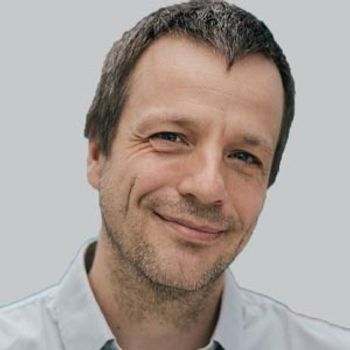
Managing Ischemic Stroke in Adolescents Requires Multidisciplinary Care
Findings from a study revealed that 50% of strokes in adolescents remained cryptogenic, sparking the need for multidisciplinary collaboration on prevention and management.
Yannick Bejot, MD, PhD
Results from a retrospective cohort study of ischemic stroke (IS) in adolescents demonstrated a high rate of misevaluation at first medical contact, as well as a high rate of stroke that remained cryptogenic, raising concerns over prevention and management.
The multicenter study included a total of 60 patients (53% male, age range 10-18 years, median, 15.2 years) who had been hospitalized with an IS between 2007 and 2017. Those who had complications of subarachnoid hemorrhage were not included in the study. Investigators collected data on demographics, preexisting vascular risk factors and medical conditions, clinical presentation and severity, clinical outcome, and recurrent vascular or neurologic event, as well as initial management and treatment, (thrombolysis or thrombectomy), and secondary prevention treatment. Data on diagnostic workup, including continuous electrocardiographic (ECG) monitoring, echocardiography, cerebral imaging, and vascular imaging of the neck and brain vessels, were also recorded.
Using the National Institute of Health Stroke Scale (NIHSS), investigators evaluated the initial clinical severity, classifying patients as having either abrupt (maximal intensity of symptoms in <30 minutes after onset), progressive (patients reaching a maximum intensity of symptoms >30 minutes), fluctuating (recurrent episodes of transient neurologic deficits before he index stroke or fluctuation of neurologic symptoms before reaching a steady state), or wake-up stroke. Clinical outcomes were assessed 3 months and 1 year after stroke onset using the modified Rankin Scale (mRS).
Of the 60 patients included in the study, 72% were between the ages of 14 and 17. The investigators estimated that the rate of first IS in patients age 10 to 18 is 0.6 per 100,000 adolescents per year based on this study cohort compared to 0.91 per 100,000 in the general population.
Although most patients (86%) had first medical contact <24 hours after symptom onset, only 64% of those cases had a first suspected diagnosis of stroke. Alternately, the most common initially suspected diagnoses were psychogenic or nonspecific disorders (61%), respiratory infection (11%), and seizure (11%), with posterior circulation strokes most significantly associated with misdiagnosis (55% vs 20% for anterior circulation strokes; P =.01).
Overall, 19 patients (32%) received emergency revascularization in the acute phase, including 10 patients (17%) who underwent intravenous (IV) thrombolysis, 7 (17%) who underwent endovascular revascularization, and 2 (3.3%) who had both IV and intra-arterial thrombolysis treatment. An additional 4 patients (7%) underwent surgical treatment for complications related to the acute IS or severity of IS.
Risk factor such as tobacco smoking and overweight/obesity were present in 17% of patients assessed. Migraine was among one of the most notable risk factors, occurring in 9% of male patients and 20% of females. Other atheromatous disease risk factors observed include dyslipidemia, hypertension, and diabetes.
Based on TOAST classification, the etiology of stroke was largely undetermined (52%). Of those, 29 patients had cryptogenic stroke and 2 had multiple causes of stroke. Other determined cause was found in 20 patients (33%) and cardioembolism was found in 9 patients (15%). According to pediatric CASCADE classification, 45% of strokes were of an undetermined etiology, with only slight differences noted between TOAST and CASCADE classifications. Notably, arterial dissections were only found in male patients, while vasculitis and autoimmune diseases were only found in female patients.
At 3 months follow-up, 55% of the 44 patients assessed had good functional outcomes, with no significant difference in outcome observed between those who received emergency revascularization and those who didn’t. At 1 year post-stroke, 67% of 35 patients available for follow-up had good outcomes. Notably, 95% of patients were on antithrombotic drugs for secondary stroke prevention at hospital discharge.
“On the one hand, our results concerning good outcome, recurrence rate, the low prevalence of atheromatous disease, and the association between arteriopathy and recurrence are confirmatory of previously published reports from large pediatric cohorts; on the other hand, findings concerning causes, risk factors (including the low rate of previous recent infection or acute systemic conditions), presenting symptoms, and the recanalization treatment rate are closer to adult reports. Thus, stroke in adolescents may represent a specific subgroup with both adult and pediatric characteristics,” the investigators wrote, noting that adolescent IS shares some “clinical, etiologic, or outcome characteristics with the pediatric stroke population and others with the adult stroke populations. Multidisciplinary collaboration is thus encouraged for the management of stroke in adolescents…Larger studies are now required to provide more accurate knowledge and characterization to improve management.”
REFERENCE
Rambaud T, Legris N, Bejot Y, et al. Acute ischemic stroke in adolescents. Neurology. Published online January 14, 2020. doi:10.1212/WNL.0000000000008783.
Newsletter
Keep your finger on the pulse of neurology—subscribe to NeurologyLive for expert interviews, new data, and breakthrough treatment updates.









































